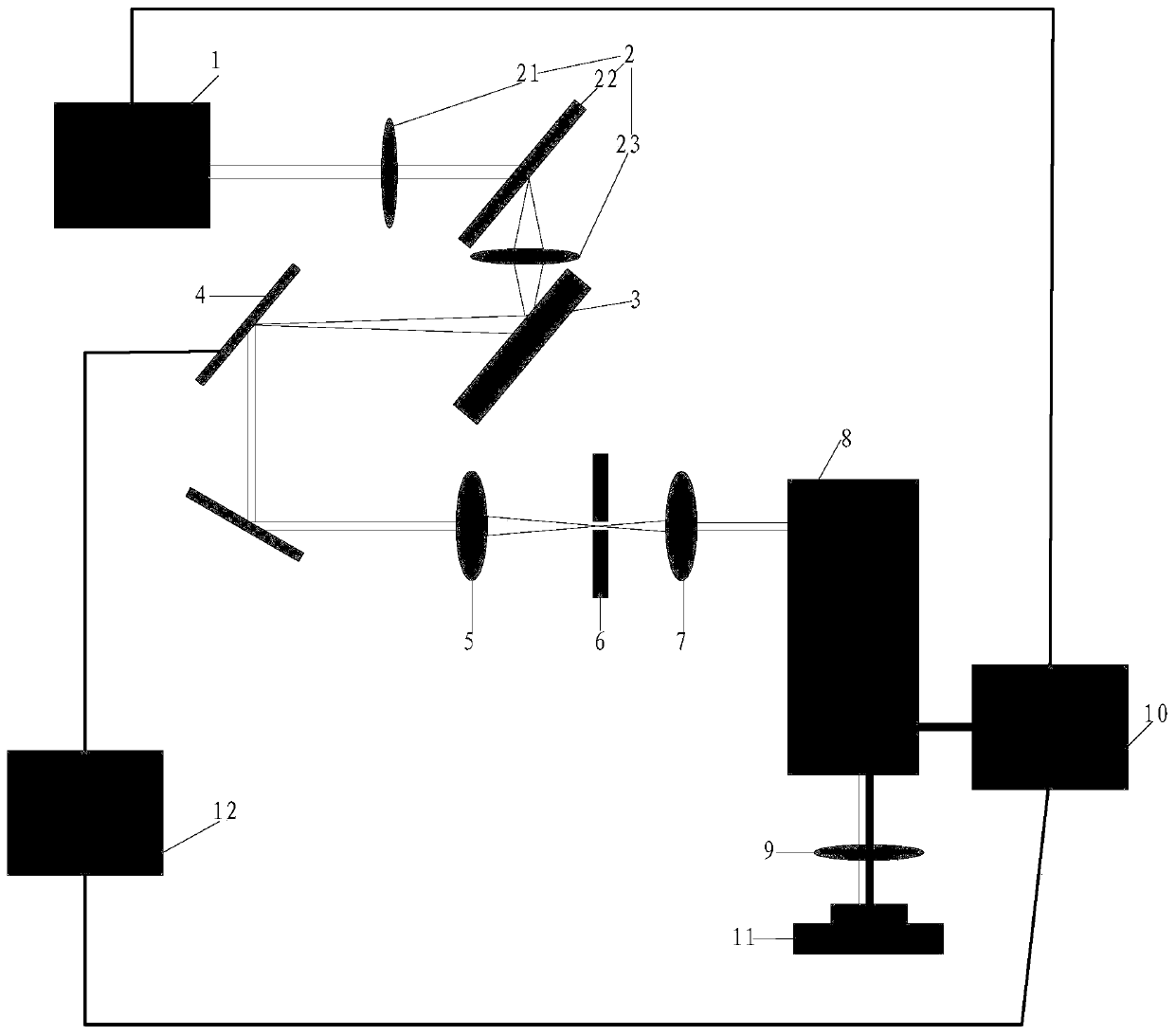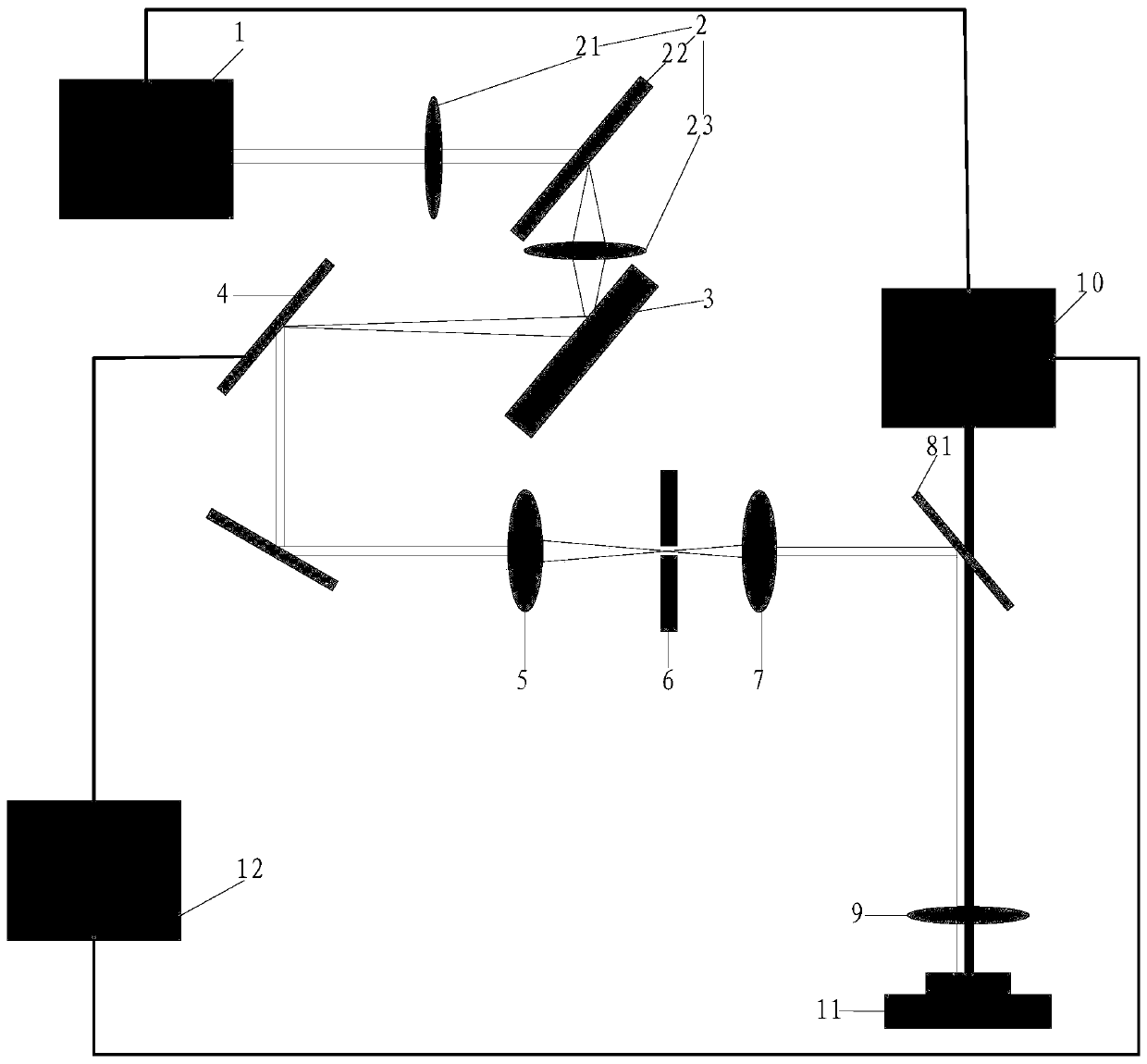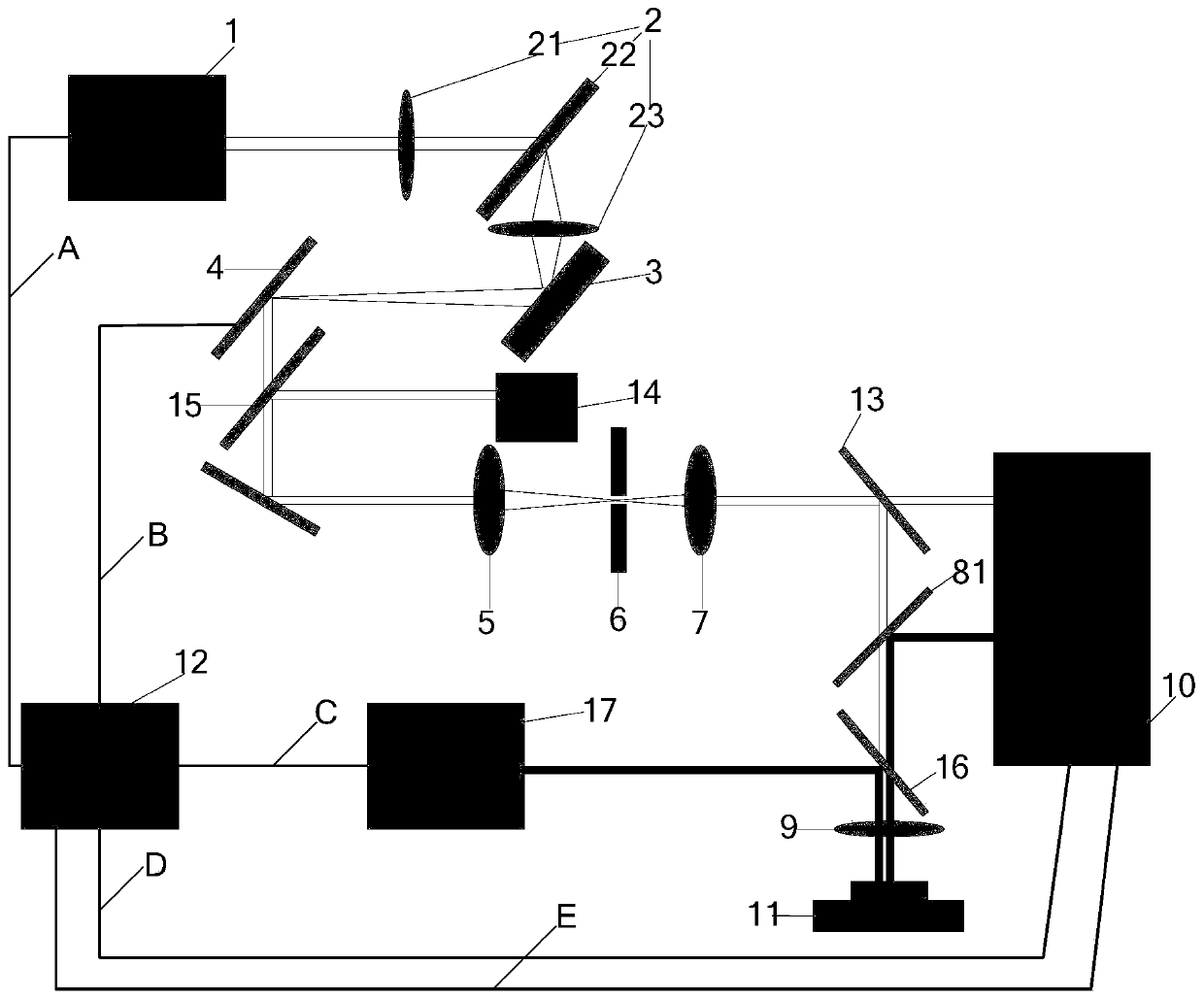DMD (digital micromirror device) computing holographic scanning-based fully automated TCSPC-FLIM (time-correlated single photon counting-fluorescence lifetime imaging microscopy) system and time detection method
A fully automated, computationally holographic technique for biomedical imaging that can address issues such as unfavorable quantitative analysis, fluorophore concentration, and impact
- Summary
- Abstract
- Description
- Claims
- Application Information
AI Technical Summary
Problems solved by technology
Method used
Image
Examples
Embodiment Construction
[0030] In order to make the purpose, features and advantages of the present application more obvious and understandable, the technical solutions in the embodiments of the present application will be clearly and completely described below in conjunction with the drawings in the embodiments of the present application. Obviously, the described The embodiments are only some of the embodiments of the present application, but not all of them. Based on the embodiments in this application, all other embodiments obtained by those skilled in the art without making creative efforts belong to the scope of protection of this application.
[0031] The embodiment of the present application provides a fully automated TCSPC-FLIM system based on DMD calculation holographic scanning, such as figure 1 As shown, the system includes: a first laser 1 and a digital micromirror device (Digital Micromirror Device, DMD) 4, a first objective lens 5, a variable filter 6, and an imaging lens arranged seque...
PUM
 Login to View More
Login to View More Abstract
Description
Claims
Application Information
 Login to View More
Login to View More - R&D
- Intellectual Property
- Life Sciences
- Materials
- Tech Scout
- Unparalleled Data Quality
- Higher Quality Content
- 60% Fewer Hallucinations
Browse by: Latest US Patents, China's latest patents, Technical Efficacy Thesaurus, Application Domain, Technology Topic, Popular Technical Reports.
© 2025 PatSnap. All rights reserved.Legal|Privacy policy|Modern Slavery Act Transparency Statement|Sitemap|About US| Contact US: help@patsnap.com



